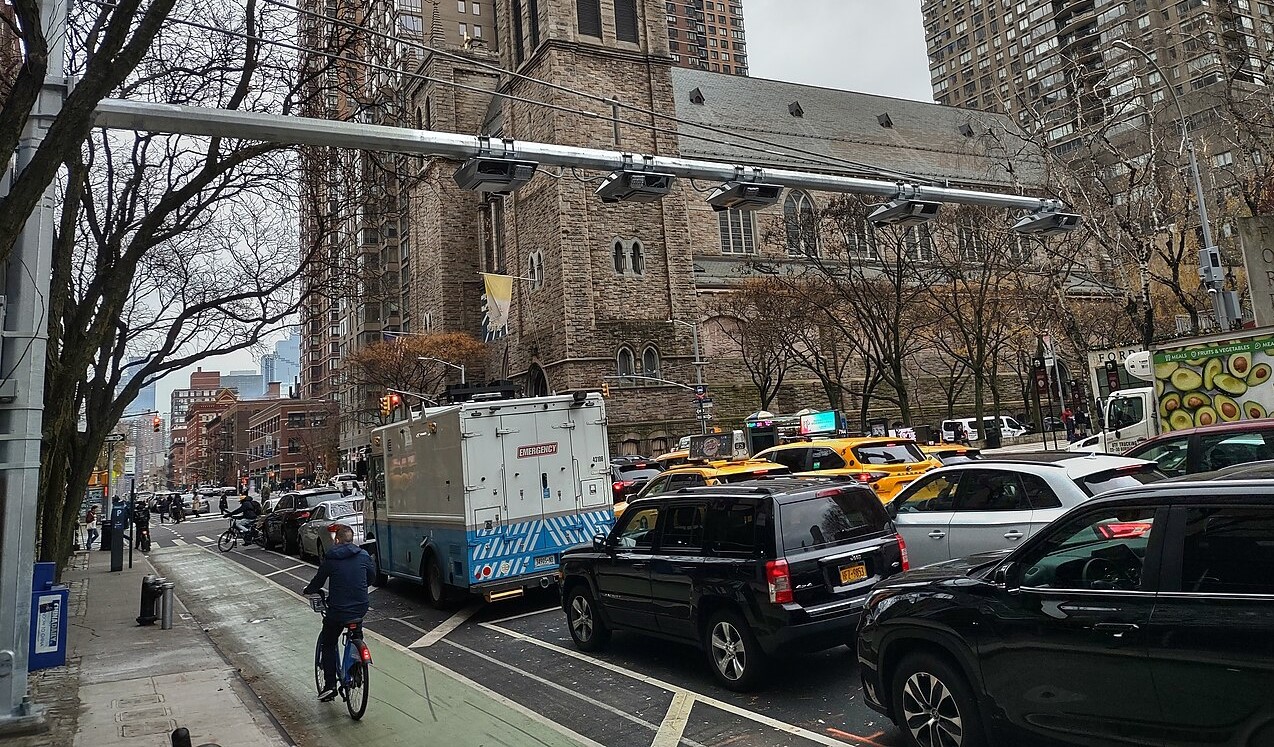In 1983, Ronald Reagan signed a small but mighty bill that would make possible the preservation of thousands of miles of the country’s unused railroad corridors as transportation routes for walking and biking.
At the time, Congress was concerned that the rapid shift from rail freight to highways would put these vital transportation corridors at risk. They saw an opportunity to maintain them by building rail trails, providing an immediate benefit to communities of all sizes, while protecting the corridors for future transportation use.
It’s likely these Congressional leaders never anticipated the impact the country’s multiuse trails would generate. The idea caught on like wildfire, and today, there are 42,000+ miles of multiuse trails nationwide, championed by citizens and local, state and federal leaders for their outsized ability to bring transformative benefits to people and places.
Today, these trails lay the foundation for hundreds of developing active transportation networks that reach every single state and generate more than $34 billion in annual economic activity. In all kinds of communities, leaders have doubled down on the potential of trail networks to provide invaluable mobility options for everyone, whether or not they drive.
'Wiped away'
Over the past several years, rural, suburban and urban places alike sought out unprecedented federal investments to bring to life their active transportation strategies, prioritizing opportunities to create and connect traffic-separated walking and biking infrastructure to make it safer and easier for their residents to get around their communities.
Among these opportunities was the Neighborhood Access and Equity grant program, which emerged under the Inflation Reduction Act as a tool to restore communities that were harmed by the construction of highways, railways and other infrastructure. In response, officials at the U.S. Department of Transportation expected to fund highway removal projects, or efforts to transform highways through capping and decking projects.
What they got were countless applications for projects to reconnect communities through walking and biking — a reflection of decades of regionally driven projects to make walking and biking safer and more convenient, and a recognition that this infrastructure is essential for people and places to thrive.
DOT’s announcement of the Neighborhood Access and Equity grants in March 2024 was historic. It marked the largest one-time federal investment in active transportation, demonstrating both the scale of demand for this infrastructure and evidence that trails hold unique power to reconnect communities nationwide.
While not surprising to us — or to the advocates and planners working to provide the walking and biking infrastructure people need to navigate their communities — this was a turning point in establishing trails and connected active transportation systems as need-to-have community assets.
Unfortunately, that progress was wiped away with the passage of the One Big Beautiful Bill earlier this month. Nestled in the details of the bill’s text was the stripping of nearly $3 billion in unobligated Neighborhood Access and Equity Grants — $750 million of which was for trail, walking and biking projects.
This is a significant blow that causes unnecessary harm to communities focused on repairing damages caused by misplaced federal transportation investments.
Among other harms, the loss of the Neighborhood Access and Equity Grant program undermined the urgency of making it safer and easier for people to walk and bike. More than 20 people die walking on U.S. roads every day, and bicyclists and pedestrians are the most likely road users to be seriously injured or killed. That’s why hundreds of places are pursuing connected trail and active transportation networks, creating safe spaces for people to walk and bike so that everyone can get around — whether or not they drive.
Now, many of those projects will not receive the investment they were promised, and people’s lives are at risk. And at the same time these grants were stripped away, DOT continues to sit on nearly $3 billion of frozen discretionary grants for trail, walking and biking projects, further stalling progress on the ground.
Announced last week, the first round of Better Utilizing Investments to Leverage Development (BUILD) grants under the Trump Administration also demonstrate a shift in federal priorities that’s out of synch with regional and local demand. This round of grants places greater investment into increased capacity for motor vehicles, though active transportation is included as an element for a little more than one-third of the projects, a pattern consistent with the president’s first term.
Moving forward
Despite these setbacks, there is no turning back. The demand for this infrastructure is strong —building on over four decades of proven impact.
Elected leaders at all levels of government have spoken out to vocalize their ongoing commitment to keeping these projects going. In Florida, for example, U.S. Representatives John Rutherford (R-FL-05) and Aaron Bean (R-FL-04) committed their support for securing additional federal funding for the Emerald Trail in Jacksonville after its grant was zeroed out in the federal reconciliation bill.
“I think that's the way we get to where we want Jacksonville to be," Rutherford said in an interview with the Florida Times-Union.
These Congressional and Administrative actions to rescind and delay funds are appalling. However, they provide insight about what we can expect as we approach other important legislative milestones, including reauthorization of the federal surface transportation law in 2026.
We must work together and remain vigilant in elevating this infrastructure as essential to the country’s economy, safety and quality of life and ensure that these setbacks are recorded in history as a one-time detour from the trail.






